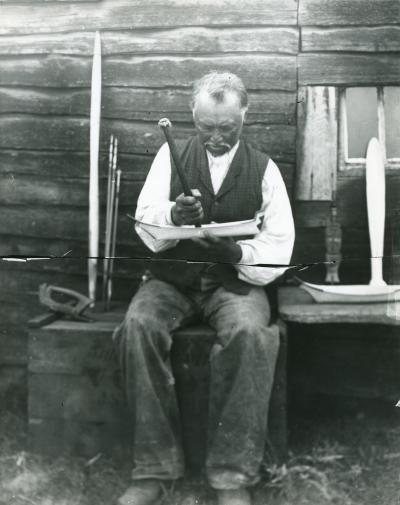Canoe Cultures…Then & Now (no. 2)
Jan 20, 2011
Native Americans have a long history on the Northwest Coast, reaching back into pre-history and forward to the present with a multitude of different tribes in Washington State alone. Many of Washington’s native peoples along the coast and around Puget Sound share cultural similarities, particularly in their historic use of canoes and their relation with the surrounding waterscape. Water provided a readily accessible, faster means of transportation than travel by foot. The Coast Salish, which includes many tribes and nations, often referred to the water in their names for people and places. The Suquamish called themselves the “people of the clear salt water” whereas another Coastal Salish groups, the Duwamish, were the “river people.” The Sound itself was called “Whulge,” or “big saltwater,” in the Lushootseed tongue.[1] Native peoples of the Northwest Coast used canoes to travel throughout the region for trade with other villages, ceremonial gatherings, extended family events, and harvesting of natural resources. Various sizes and types of canoes served diverse functions, including transportation, trade material, fishing, whaling, and burial rites. The history of Northwest canoe construction is steeped in tradition, but the canoe cultures were nearly lost. The advent of the 20th century brought drastic changes in the regional landscape and transportation in particular. Few traditional canoes were made or used. In the late 20th century, a revival of annual tribal canoe journeys has reinvigorated some of the Northwest canoe cultures, including the revitalization of canoe construction and historic saltwater travel routes.  Circa 1900 view of a Makah man carving a miniature canoe. Source: Washington State Library, Digital Collections.
Circa 1900 view of a Makah man carving a miniature canoe. Source: Washington State Library, Digital Collections.
 Circa 1900 view of a Makah man carving a miniature canoe. Source: Washington State Library, Digital Collections.
Circa 1900 view of a Makah man carving a miniature canoe. Source: Washington State Library, Digital Collections. [1] Virginia Sharff and Carolyn Brucken, Home Lands: How Women Made the West (Berkeley: University of California Press, 2010), 97.




